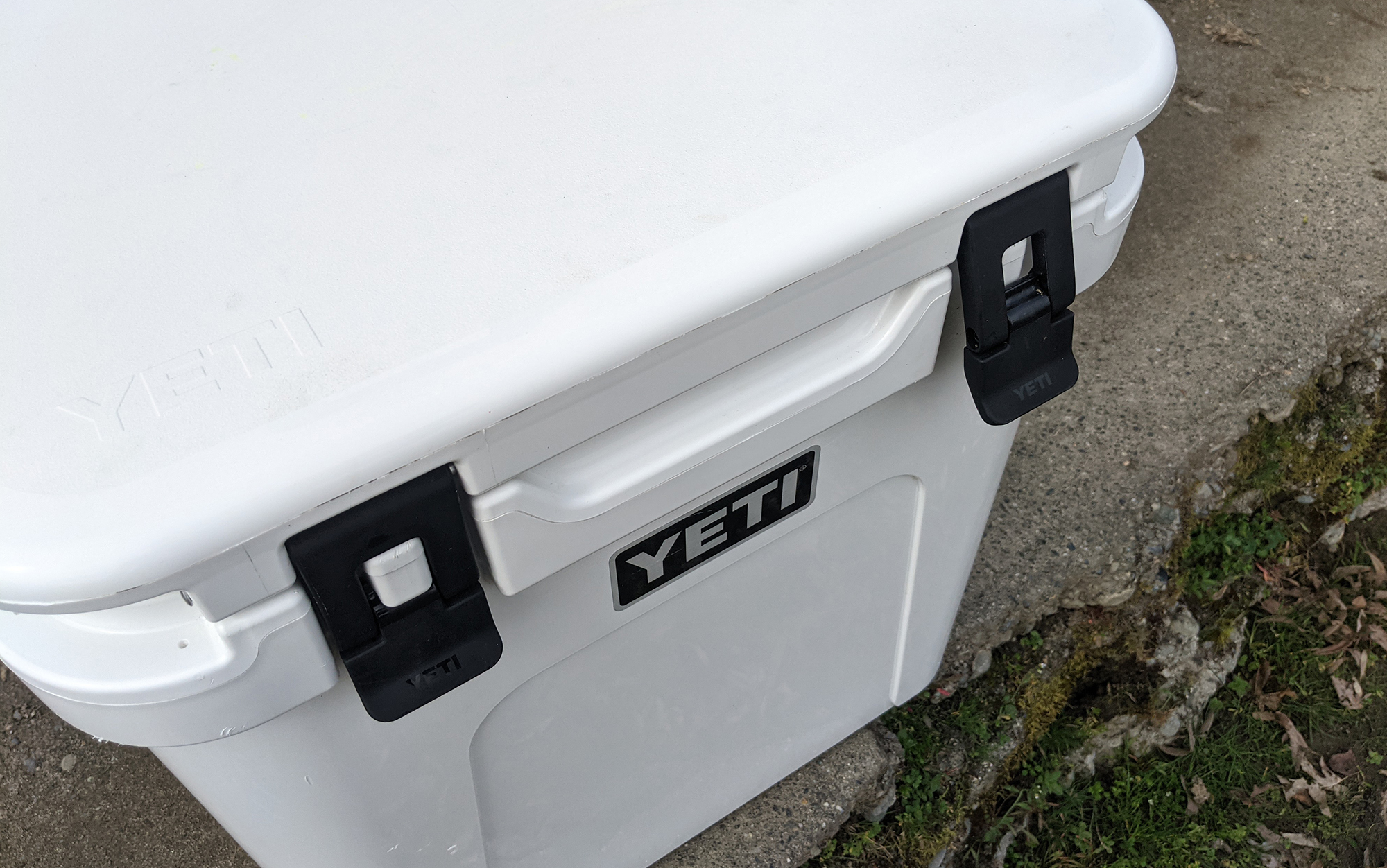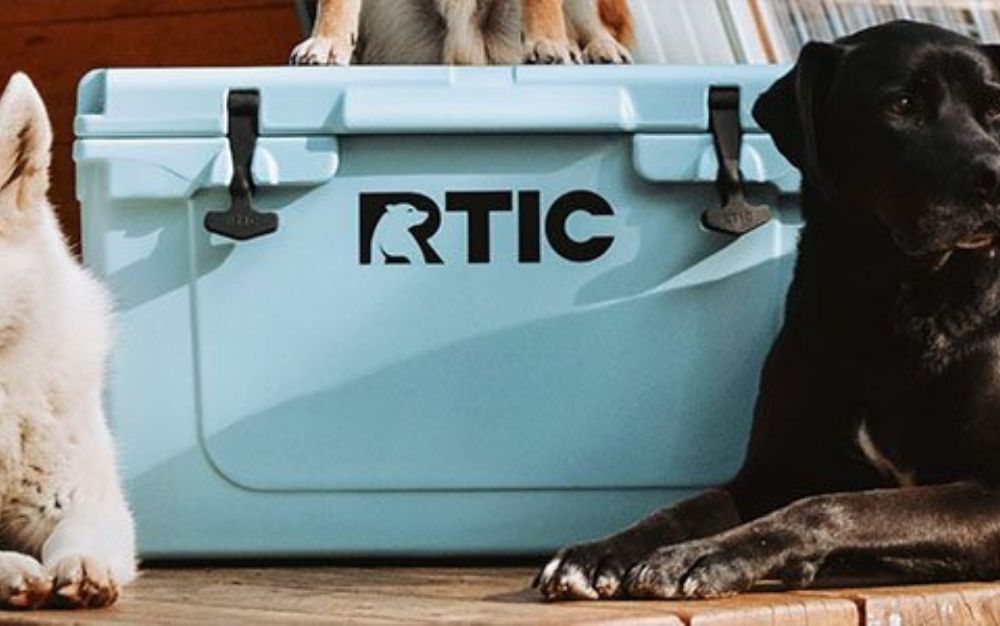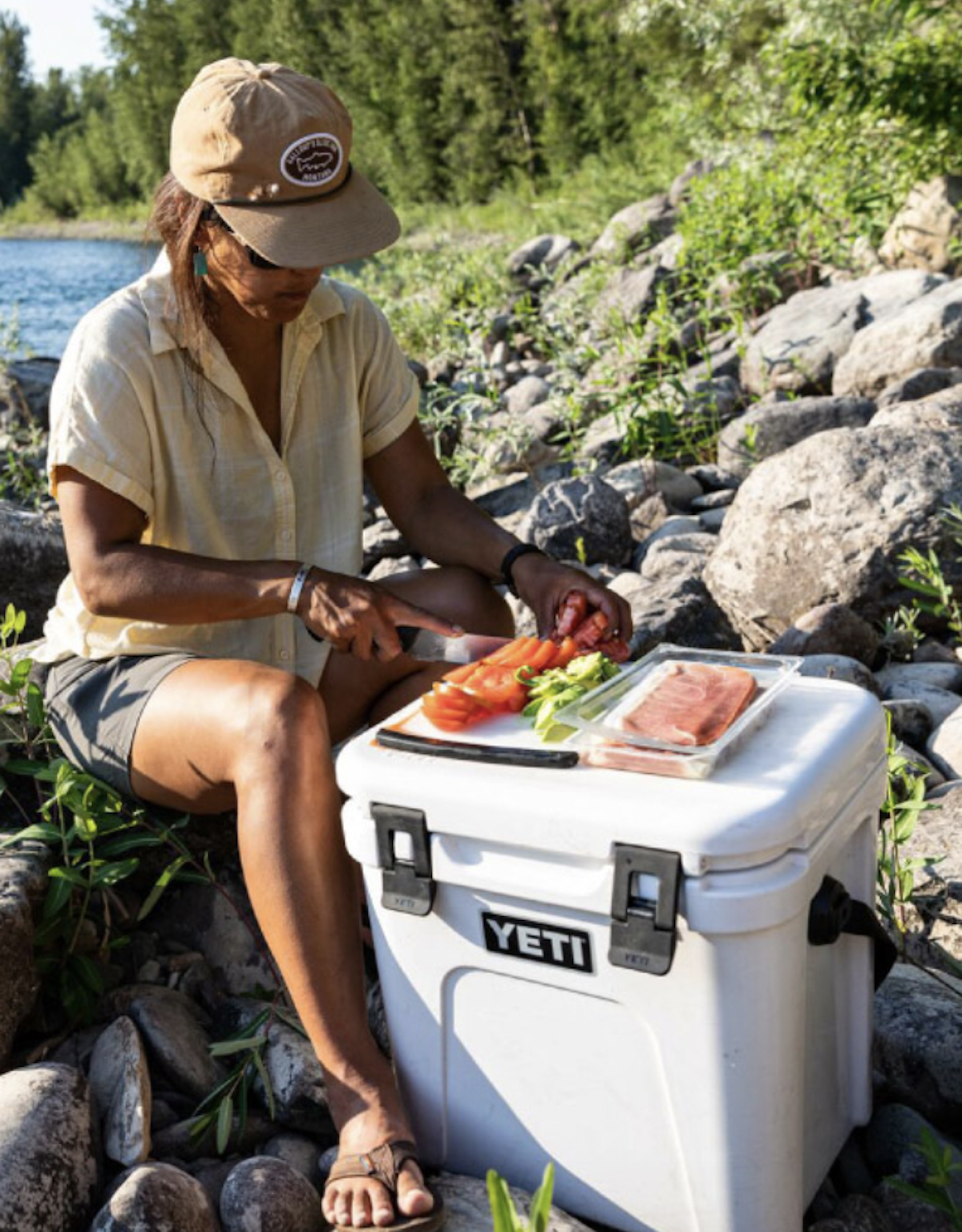We may earn revenue from the products available on this page and participate in affiliate programs. Learn More ›
It’s the battle of the coolers: Rtic vs. Yeti. In one corner, we have fan favorite Yeti, and in the other there is Rtic, looking just as beefy and impressive but at a fraction of the price. Yeti supporters will tell you there is no question: this cooler has the insulation and the durability to make it worth the price. Rtic boosters will tell you that you are being gouged for a brand name when the Rtic coolers are virtually identical. Ready to place your bet?
Design and Appearance

Appearance-wise, these coolers are awfully similar looking. (And this is even after Yeti sued Rtic for copying their designs.) Except for the logo, many of the products from each brand are nearly indistinguishable. Similar looking rotomolding construction, thick walls, anchor-shaped latches. The Rtic has an extra drainage port, so there is something at least. These similarities are partly why some people claim that you are just purchasing a logo when you spend extra on the Yeti.
Rtic vs Yeti Price
This is arguably the biggest difference between these two products. Yeti coolers, across every size and model are significantly more expensive than the comparable Rtic model. Here’s a breakdown of a few sizes and models.
| Size | Yeti Tundra series | Rtic Original series |
| 45-quart | $325 | $220 |
| 65-quart | $375 | $250 |
| 110-quart | $550 | $400 |
If you’re wondering if some of this price difference is due to the location where the goods are manufactured, the answer is … maybe. Rtic coolers are made in China. Yeti coolers, on the other hand, are made in a variety of locations, from the Philippines to Mexico to the USA. To confirm whether a particular model is made in the USA requires a call to Yeti.
Rtic vs Yeti Performance

In my test of the insulation of the best camping coolers, it was fairly clear that Yeti does make a marginally better cooler than Rtic, although not the best cooler (that would be the ROVR RollR). To test these coolers, I emptied a bag of ice into each cooler and then checked to see how long it took for each to melt, with the best of the lot lasting nearly four days. The ice in the Yeti (the Roadie 48) lasted 35 hours while the ice in the Rtic (Original 65) lasted a little under 27 hours.
While the Yeti beat the Rtic, for most folks it’s probably not enough performance to account for the extra cost. Especially considerably you could just buy a few extra of the best ice packs for coolers and still have saved around a hundred dollars.
Beyond Roto-Molded Coolers

Both brands have grown far beyond the roto-molded cooler world. Both offer lines of soft coolers, drinkware, bags, and merch. Rtic makes SUPs, tubes, and hard cases. Yeti also makes hard cases, but also dog bowls, chairs, blankets, French presses, and more.
Here too, Yeti products are substantially more expensive. For example, a 20-ounce Yeti tumbler cost $30. A 20-ounce Rtic tumbler costs $15.
Rtic’s 24-can backpack soft cooler costs $160. Yeti’s backpack soft cooler costs $325.
Now it’s true there are more features in the Yeti products. But is a “Magslider” lid on a Yeti tumbler worth an extra $15 to you? Only you can decide that one. However, it’s clear that when you buy Yeti products, part of what you are paying for is also the notoriety and cool-factor of the brand. For some, that’s worth it. For others, not so much. —Alex Robinson
Durability
When it comes to Rtic vs Yeti, they’re not just competing on price, ice retention, and product line diversity, it’s also durability. Let’s take a look at how they compare.
Throwing Coolers off of Buildings!
Yeti first got our attention by throwing their coolers off of things: building, cliffs, etc. Were these obviously marketing stunts? Yes. Were they still freakin’ awesome? Also yes.
Because here’s the thing: the Outdoor Life staff (and especially the members of the gear team) are not nice to our gear. I drop and break things all the time, sometimes by accident, which happened with another cooler, the Oyster Tempo, during my testing of the best camping coolers. But I also drop test products on purpose, so that OL readers know which are tough enough for the outdoors, such as I did with the best power banks for backpacking.

However most of us probably aren’t going to drop a cooler off a two-story building. That’s not really what you do with coolers. I tried my hardest to find some documentation on what happens to an Rtic cooler when you throw it off a building and I couldn’t find it, probably because it doesn’t happen. So Yeti’s performance, while flashy, is probably not realistic.
BEARS!
When I did a deep dive on the testing behind the best bear canisters, I found that the best way to test if a product is bear-resistant is to use actual bears. The employees at the Wolf and Grizzly Discovery Center in West Yellowstone, Montana, are the masterminds behind this kind of testing, and they don’t just test bear canisters. They’re also responsible for testing trash cans and coolers for use in bear country. They stuff the products with peanut butter, honey, and fish, and then hand them over to the bears to see what happens. Sometimes the bears are able to smash the cooler apart in a matter of seconds; sometimes they struggle for over an hour before giving up.

You can view their full list of approved products here, but this is what you need to know: Yeti has 18 coolers that survived this testing protocol on the list, including their entire Tundra line. Rtic has one. In the battle of the coolers, that’s a point for Yeti.
Of course, you don’t have to leave your cooler outside for bears to get at—you can always put it in your car. If you do plan to let bears play with your cooler, make sure to purchase locks, which Yeti sells on its website.
Weeks Adrift at Sea!
Look, Yeti knew what it was doing when it stuffed one of its coolers with peanut butter and kippers and stuck it in a grizzly bear enclosure. They clearly meant to drop it two stories (they wouldn’t have posted the video on their social media if the cooler had burst apart at the hinges). But they didn’t mean to have a whole shipping container’s worth of Yetis get dumped into the Pacific Ocean during a freak storm.
Which is exactly what happened in 2021 when 1600 Yetis went into drink off the coast of Alaska. For a lesser cooler, battered by waves and inundated by water, that might have been the end of the story, as they sunk to the depths of the ocean floor. But not the Yetis. Instead, these coolers started washing up on shore everywhere from Alaska to Seattle to Hawaii.
The coolers were in such good shape that people even went looking for them, hoping to snag a free best-in-class cooler that was virtually new as long as you didn’t mind a few scratches. I’m not saying that Rtic should contrive to have something similar happen to their coolers (the Pacific garbage patches are plenty big already), but I am saying this is the kind of durability test that is virtually impossible to match.
Warranty

Of course, we probably could have just skipped the above and jumped straight to the warranty: How long a manufacturer is willing to guarantee their product is a good indicator of quality you can expect from the manufacturing process. Here are the stats:
- Yeti: 5 year limited lifetime warranty
- Rtic: 1 year limited lifetime warranty
That’s game, Yeti.
Final Thoughts on Rtic vs Yeti
Yeti has more than earned its reputation for toughness and durability. If you’ve been saving up for a new cooler, this is a great investment that will last you for many years. But if you’re thinking your cooler won’t need to survive a grizzly bear or a fall from a cliff or being thrown overboard into the Pacific, then you’ll likely also be happy with an Rtic. When you can choose between two great coolers, one built to survive every imaginable torture test and one built for value, the real winner is the consumer.

